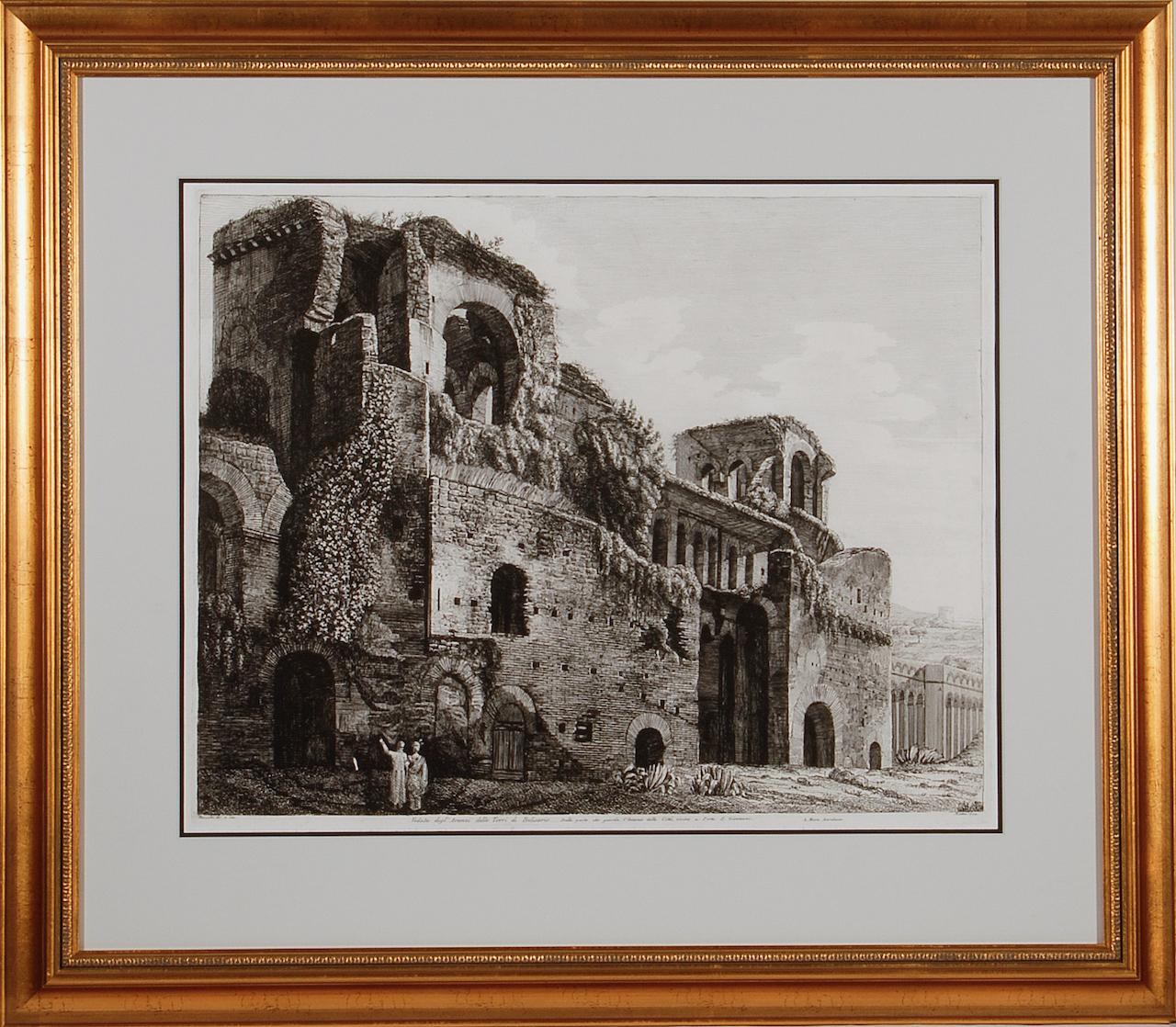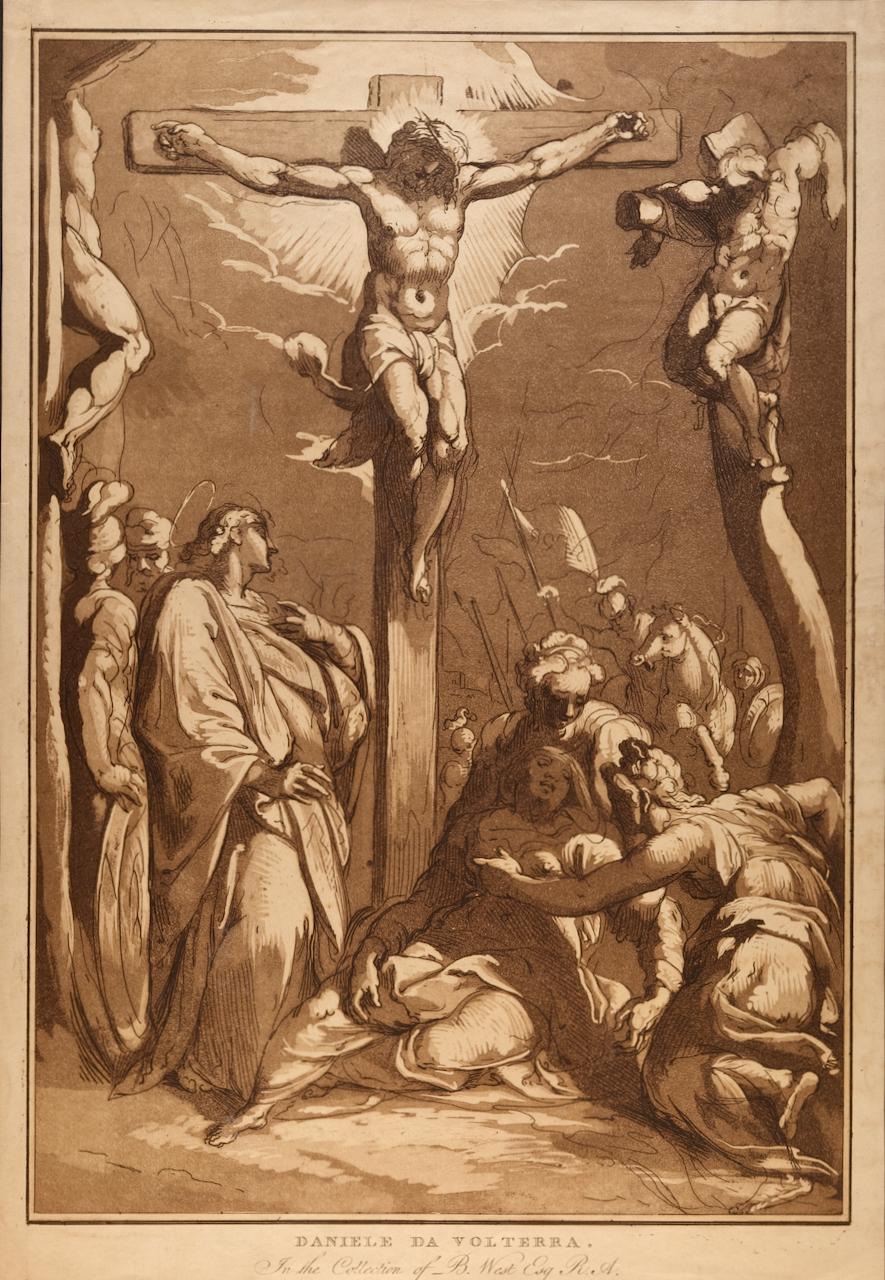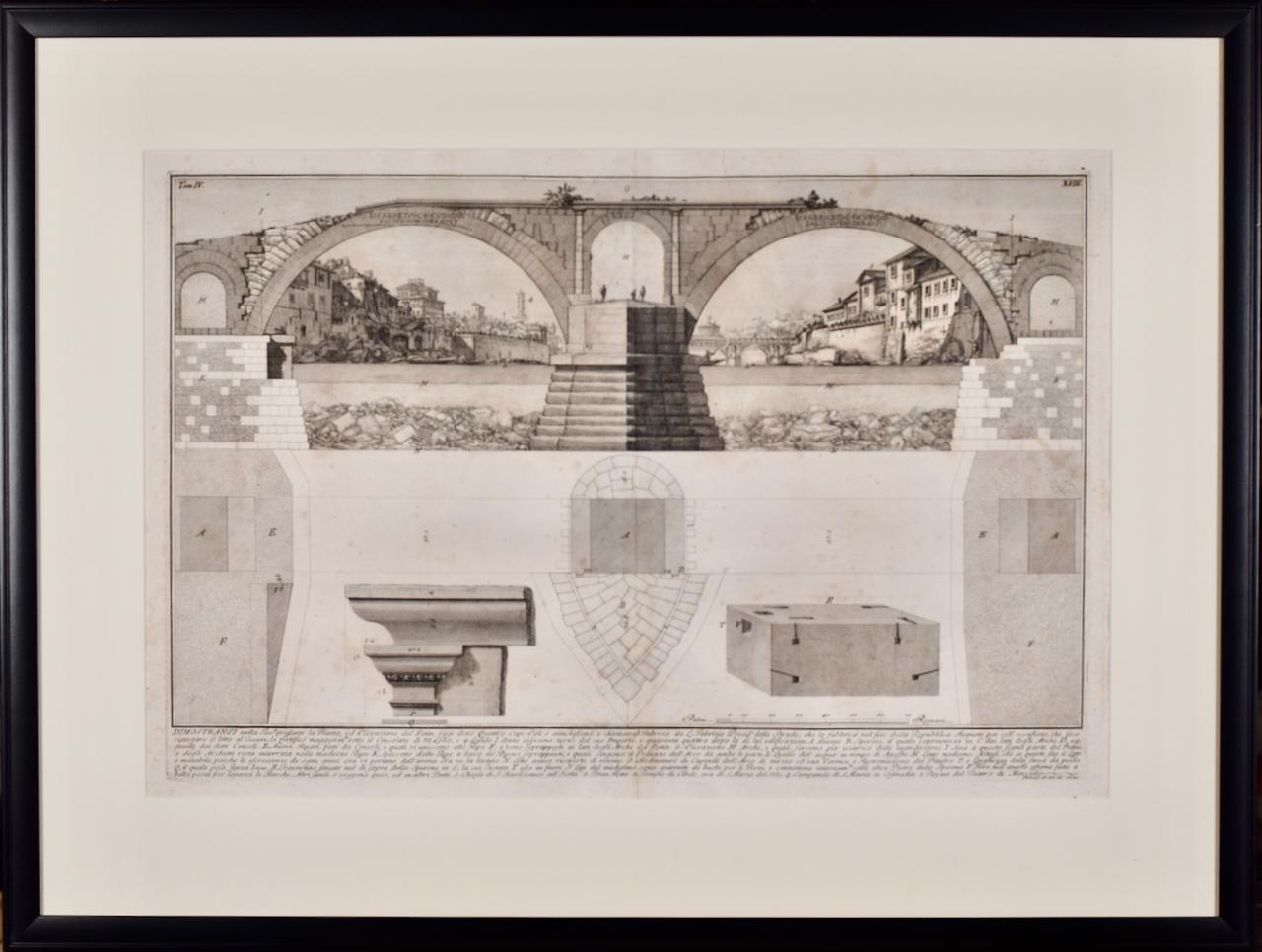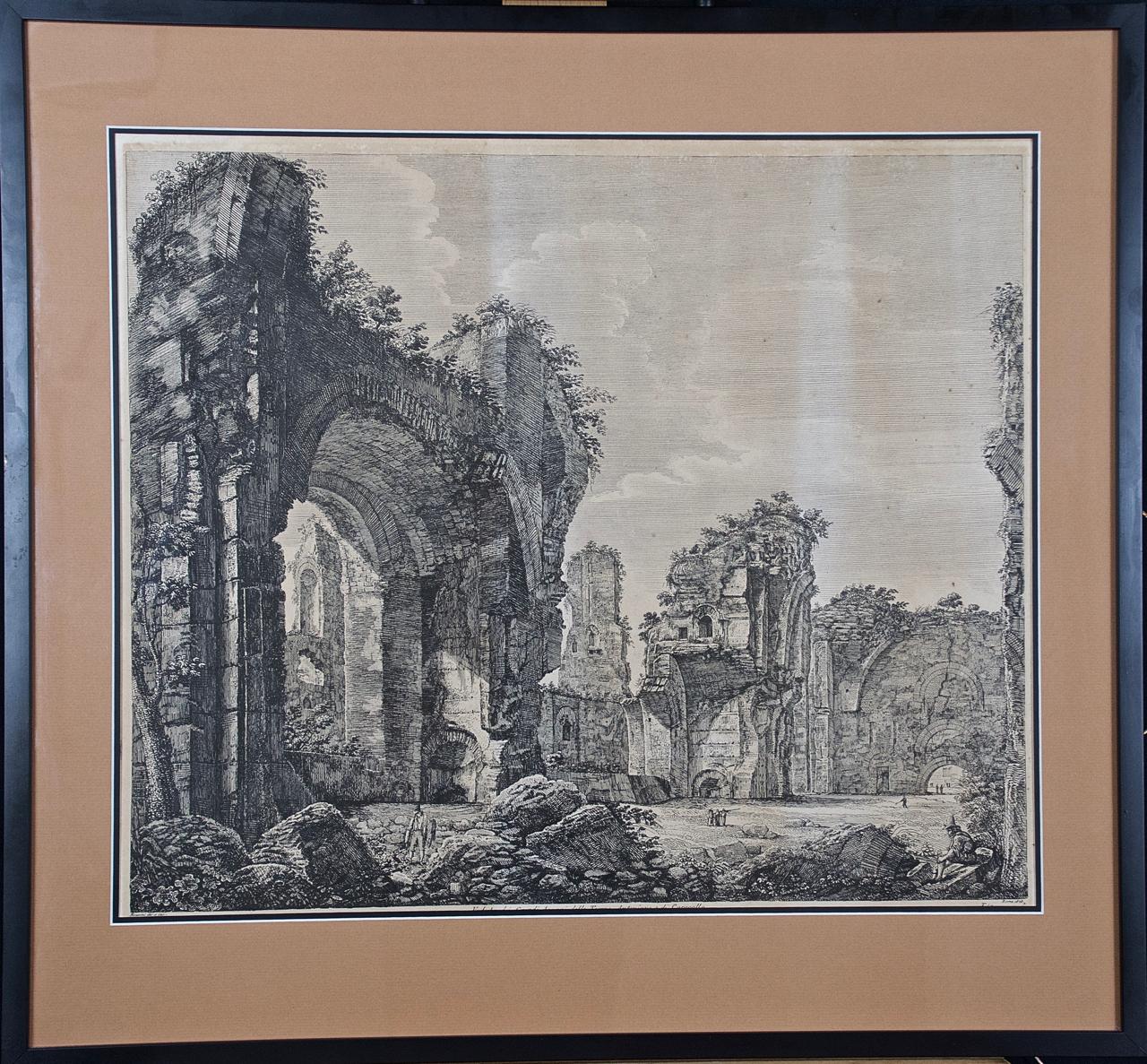Items Similar to Leandre - Etching by Bernard Picart - 1742
Want more images or videos?
Request additional images or videos from the seller
1 of 6
Bernard PicartLeandre - Etching by Bernard Picart - 17421742
1742
About the Item
Black and white etching on wire rod paper, representing the Greek myth of Leandre.
Beautiful plate with fresh impression and sharp details, from the volume “Le Temple des Muses”, published in Amsterdam in 1742 by Zacharias Chatelain. Capture (under the image) and author inscribed: "B. Picart del. 1730" under the frame engraved, on the lower-left margin. In very good conditions, except for a usual light yellowing of the margins and some light foxings on margins (beyond the marginal line), some light vertical folds on the right margin in correspondence of the binding, higher-right corner missing.The engraved image is in perfect conditions.
Le Temple des Muses was an illustrated book of Ovid's more popular fables and other Greek myths published in 1733 in Dutch (Tempel der Zanggodinnen), in 1738 in English, and in 1742 in French by Zacharias Chatelain. The engravings had captions in four languages: French, English, German, and Dutch.
The wonderful sixty plates engraved by Bernard Picart were a sort of fashionable mythological compendium, useful in the eighteenth century, when the fascination with Greek and Roman antiquity followed the systematic excavation of the ruins at Pompeii and Herculaneum in southern Italy; and after 1750 a neoclassical style dominated all artistic fields.
Bernard Picart (Paris, 1673 – Amsterdam, 1733)
French engraver best known for his book-illustrations, including the Bible and Ovid. His most famous work is Cérémonies et coutumes religieuses de tous les peuples du monde, published from 1723 to 1743 and was defined: "an immense effort to record the religious rituals and beliefs of the world in all their diversity as objectively and authentically as possible" by Jonathan I. Israel.
- Creator:Bernard Picart (1673 - 1733, French)
- Creation Year:1742
- Dimensions:Height: 17.96 in (45.6 cm)Width: 11.26 in (28.6 cm)Depth: 0.04 in (1 mm)
- Medium:
- Movement & Style:
- Period:1740-1749
- Framing:Framing Options Available
- Condition:Insurance may be requested by customers as additional service, contact us for more information.
- Gallery Location:Roma, IT
- Reference Number:
About the Seller
4.9
Platinum Seller
These expertly vetted sellers are 1stDibs' most experienced sellers and are rated highest by our customers.
1stDibs seller since 2017
6,746 sales on 1stDibs
Typical response time: 2 hours
- ShippingRetrieving quote...Ships From: Grasse, France
- Return PolicyA return for this item may be initiated within 14 days of delivery.
More From This SellerView All
- The Family - Original Etching by Jean-Louis Demarne - 18th centuryLocated in Roma, ITThe Family is an Original Etching realized by Jean-Louis Demarne (1744-1829). The little artwork is in good condition, included a light green cardboard passpartout (49x31.5 cm). Stamp signed on the lower right corner. Jean-Louis de Marne (1752-24 March 1829) was a French painter. He concentrated on landscape and genre painting, in which he was greatly influenced by such 17th century Dutch masters as Aelbert Cuyp...Category
18th Century Old Masters Figurative Prints
MaterialsEtching
- Ancient Roman Fresco - Original Etching By F. Cepparuli - Mid-18th CenturyBy Francesco CepparuliLocated in Roma, ITFrancesco Cepparuli, Ancient Roman Fresco, original etching hand watercolored. Mid-18th Century. original etching from the end of the 18th century, realized by Francesco Cepparuli. ...Category
Late 18th Century Old Masters Figurative Prints
MaterialsEtching
- Chiesa di S. Paolo alle Tre Fontane - Etching by G. Vasi - Late 18th CenturyBy Giuseppe VasiLocated in Roma, ITChiesa di S. Paolo alle Tre Fontane is an original black and white etching of the Late 18th century realized by Giuseppe Vasi. The beautiful etching represents a glimpse of Rome. S...Category
Late 18th Century Old Masters Figurative Prints
MaterialsEtching
- Chiesa della SS. Trinità - Etching by G. Vasi - Late 18th CenturyBy Giuseppe VasiLocated in Roma, ITChiesa della SS. Trinità is a black and white etching of the Late 18th century realized by Giuseppe Vasi. Signed and titled on plate lower margin. Good conditions and aged margins...Category
Late 18th Century Old Masters Figurative Prints
MaterialsEtching
- Tempio della Fortuna - Etching by G. Vasi - Late 18th CenturyBy Giuseppe VasiLocated in Roma, ITTempio della Fortuna is an original etching hand watercolored of the Late 18th century realized by Giuseppe Vasi. Signed and titled on plate lower margin. Good conditions and aged...Category
Late 18th Century Old Masters Figurative Prints
MaterialsEtching
- Chiesa di Paolo Primo Eremita - Etching by G. Vasi - Late 18th CenturyBy Giuseppe VasiLocated in Roma, ITChiesa di Paolo Primo Eremita is an original black and white etching of the Late 18th century realized by Giuseppe Vasi. Signed and titled on plate lower mar...Category
Late 18th Century Old Masters Figurative Prints
MaterialsEtching
You May Also Like
- Ruins of the Roman Baths of Belisarius: A 19th C. Etching by Luigi RossiniBy Luigi RossiniLocated in Alamo, CAThis early 19th century etching entitled "Veduta degl' Avanzi delle Torri di Belisario Dalla parte che guarda l' Interno della Città, vicino a Porta S. Giovanni, A. Mura Aureliane" (...Category
1820s Old Masters Landscape Prints
MaterialsEtching
- Church of St. Costanza, Rome: An 18th Century Piranesi Architectural EtchingBy Giovanni Battista PiranesiLocated in Alamo, CAThis is a framed 18th century Giovanni Battista Piranesi etching entitled: "Veduta interna del Sepocro di Santa Costanza, fabbricat...Category
1770s Old Masters Interior Prints
MaterialsEtching
- Crucifixion: 18th Century Etching by Conrad Metz after Daniele da VolterraLocated in Alamo, CA"Crucifixion" is an etching and aquatint, printed in brown ink by Conrad M. Metz after a painting by Daniele da Volterra. It was published in London in 1789 in 'Imitations Of Ancient...Category
Late 18th Century Old Masters Figurative Prints
MaterialsEtching, Aquatint
- Fabricius (Ponte Cestio) Bridge : Framed 18th C. Piranesi Architectural EtchingBy Giovanni Battista PiranesiLocated in Alamo, CAThis framed 18th century etching by Giovanni Battista Piranesi is entitled "Dimostransi nella Tav. presente la Pianta, ed Elevazione del Ponte, oggi detto Quattro Capi egli è antichissimo, e chiamavasi Fabrizio da L. Fabrizio Presid. delle Strade, che lo fabbrico' nel fine della Repubblica. "(The Plan and Elevation of the Bridge, today called Quattro Capi. The architect is very ancient, and was called Fabrizio da L. Fabrizio Presid. delle Strade, who built it at the end of the Republic). This is plate 18 in volume 4 of Piranesi's "Le antichita romane opera di Giambatista Piranesi architetto veneziano" (Roman antiquities by Giambatista Piranesi Venetian architect). It was published in Rome in 1756-1757. This etching depicts the plan and elevation of the bridge now called the Ponte dei Quattoro Capi or Ponte Cestio (Bridge of the Four Heads), which in antiquity was called the Bridge of Fabricius after L. Fabricius, the Superintendant of the Streets who built it at the end of the Republic, around 62 BC. It was also been known in the Middle Ages as ‘Ponte Giudeo’ (Bridge of the Jews). The bridge crossed from the left bank or northeast side of the Tiber River to Tiber Island...Category
1750s Old Masters Landscape Prints
MaterialsEtching
- 19th Century Etching of the Ancient Caracalla Baths in Rome by Luigi RossiniBy Luigi RossiniLocated in Alamo, CAThis early 19th century etching entitled "Veduta dei Grandi Avanzi delle Terme Antoniane, o di Caracalla" (The baths of Caracalla) was created by Luigi Rossini and included in his pu...Category
1820s Old Masters Figurative Prints
MaterialsEtching
- 18th C. Piranesi Fireplace Designs based on Ancient Architectural StylesBy Giovanni Battista PiranesiLocated in Alamo, CAThese two Giovanni Battista Piranesi 18th century etchings of fireplace designs on one sheet is plate 6 from his publication 'Diverse Maniere d'adornare i cammini ed ogni altra parte degli edifizi desunte dall'architettura Egizia, Etrusca, e Greca con un Ragionamento Apologetico in defesa dell'Architettura Egizia, e Toscana, opera del Cavaliere Giambattista Piranesi...Category
Mid-18th Century Old Masters Figurative Prints
MaterialsEtching
Recently Viewed
View AllMore Ways To Browse
Antique Correspondence
Antique Binding Book
Antique Book Bindings
Italian Framed Print Greek
Greek Muses
Greek Ruins
Antique French Bible
Neoclassical Engraving Framed
Roman Ruins Framed
Antique Paper Sorter
Antique Style Bible
Antique English Bible
Antique Illustrated Bible
Temple Des Muses
Bernard Picart Framed
Bernard Picart On Sale
Brown Old Mine
Vintage Bicycle Collection





